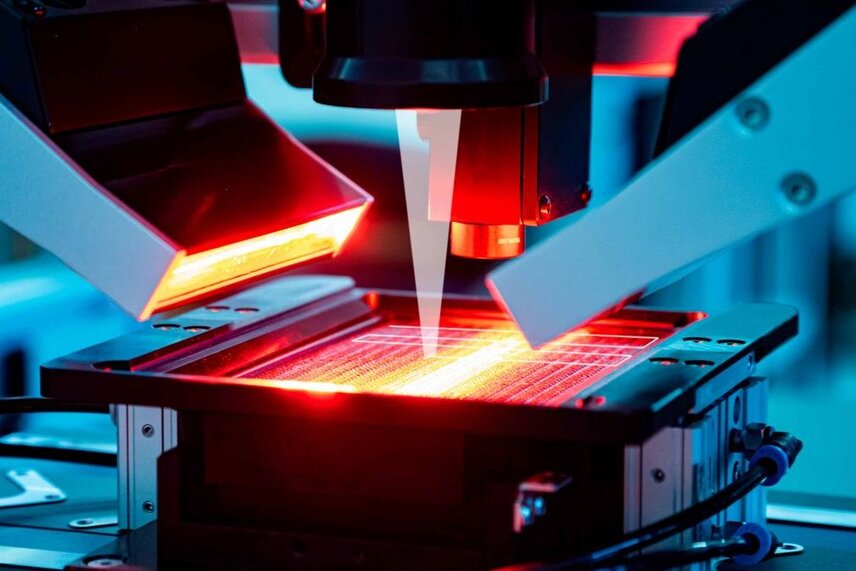
The new MICRO.SPECTOR from MABRI.VISION scans the complete surface area of components at resolutions smaller than 1 µm. Thus, the system can reliably detect the smallest shape deviations, inclusions or particles in microstructures. Its extremely high operating speed allows the system to be integrated into production lines and scan the products’ entire surface area at the pace of production.
While the visual inspection of a miniaturized component by means of traditional microscopes can take several hours, depending on the complexity of the part, the MICRO.SPECTOR can perform this task, including result evaluation, in a matter of seconds. This capability makes the system suitable for being integrated into production processes and performing 100-percent surface inspections fully automatically.
Typical applications of the new high-speed microscope are components up to 300 mm x 300 mm size with features in the micro-range. For example:
The measuring process is completely integrated into the manufacturing process and performed fully automatically: A sliding carrier feeds the components into the measuring cell at the pace of production for the camera to scan the surface. The carrier travels at speeds of up to 40 mm/s below the stationary lighting and camera unit. At, let’s say, a resolution of 0.75 µm and about 18,000 pixels per line, the system would successively capture the surface in stripes of about 13 mm that the software combines into a complete picture.
The measurement takes just a few seconds to be completed. The sliding carrier moves out of the measurement cell, with the measurement result, “OK” or “not OK”, being instantly indicated on the HMI. The high processing speed and the parallelized processing of the data enables the MIKRO.SPECTOR to achieve cycle times of less than 30 seconds, depending on the component size.
Dr. Ulrich Marx, one of the two Managing Directors of MABRI.VISION, says: “We see a growing trend towards increasing miniaturization in many industrial sectors. In quality control, the application of classical image processing has so far concentrated on objects of larger dimensions. With our innovative approach, we are now not only entering the world of microscopic surface inspection, but also supplying systems that can operate at the pace of production. This, of course, calls for sophisticated software. But, utmost mechanical precision to ensure that the item to be measured and the camera are accurately positioned, and excellence in interface expertise to enable smooth integration into the customer’s process control system are just as important. All these features have been implemented in our MICRO.SPECTOR system.”
The significance of cutting-edge technologies in medical technology, particularly smart implants, takes center stage at this year's COMPAMED Innovation Forum. …
STCC4, one of the world's smallest sensors for direct CO2 measurement, unlocks vast new applications for monitoring CO2 …
The optical industry almost completely relies on mechanical processes in its process chains. This, however, could soon change. The Fraunhofer …